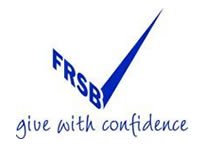"FRSB complaints data are no reason for complacency" says consultant
Writing in the July edition of his monthly newsletter ‘Harvest’, marketing consultant Andrew Papworth criticises the Fundraising Standards Board’s latest annual complaints report because of “its fixation with the idea that almost 15,000 complaints is tiny in the context of the total fundraising activities by charities”.
He argues that “Apart from the fact that there is serious doubt about how many public complaints get reported to the FRSB, this is more than twice the number of complaints the Press Complaints Commission receives in a year.” He adds that “the tone of the report smacks somewhat of smugness”, citing the comment by the Chief Executive Alistair McLean that “complaints as a proportion of volume for these three areas (i.e. addressed direct mail telephone and door-to-door fundraising) remain reassuringly low”.
Challenging the figures and calculations
Papworth challenges the FRSB’s figures and conclusions on two grounds. First, given that “67% of FRSB member charities did not report any complaints at all”, he suggests that “it is simply not credible that two-thirds the charities belonging to FRSB had not a single complaint in the year”.
Secondly he argues that the FRSB’s attempts to calculate the number of complaints against the number of ‘solicitations’ is ‘specious’ because it is “attempting the impossible”. He writes: “The natures of “solicitations” v ia direct mailshots, telephone calls, posters, TV ads, newspaper ads, magazine ads, chugging encounters and clothing collections are so different as to render any comparisons utterly invalid”.
He proposes that “what would be needed would be some way of calculating the proportion of complaints as a percentage of all exposures – i.e. mailshots opened and read, posters looked at, etc.” But he accepts that this is impractical.
As well as the difficulty of establishing adequate benchmarks for what constitutes an exposure to a fundraising appeal, Papworth suggests that the trends are difficult to interpret because of the growth in the membership of the FRSB and the fluctuations in the volume of fundraising activity across different channels and media.
His article “I have a complaint to make…” concludes by recommending that the FRSB focus on the upwards trajectory of the complaints figures. His newsletter opens with a reference to a Matt newspaper cartoon which features a man and woman leaving a hospital’s accident and emergency department, with the main saying: “Thank goodness I was run over, otherwise I’d never have got rid of that chugger”. Papworth comments: “The sector needs to worry when Matt turns his attention to its shortcomings on the Telegraph’s front page”.
www.andrewpapworth.co.uk
Advertisement




